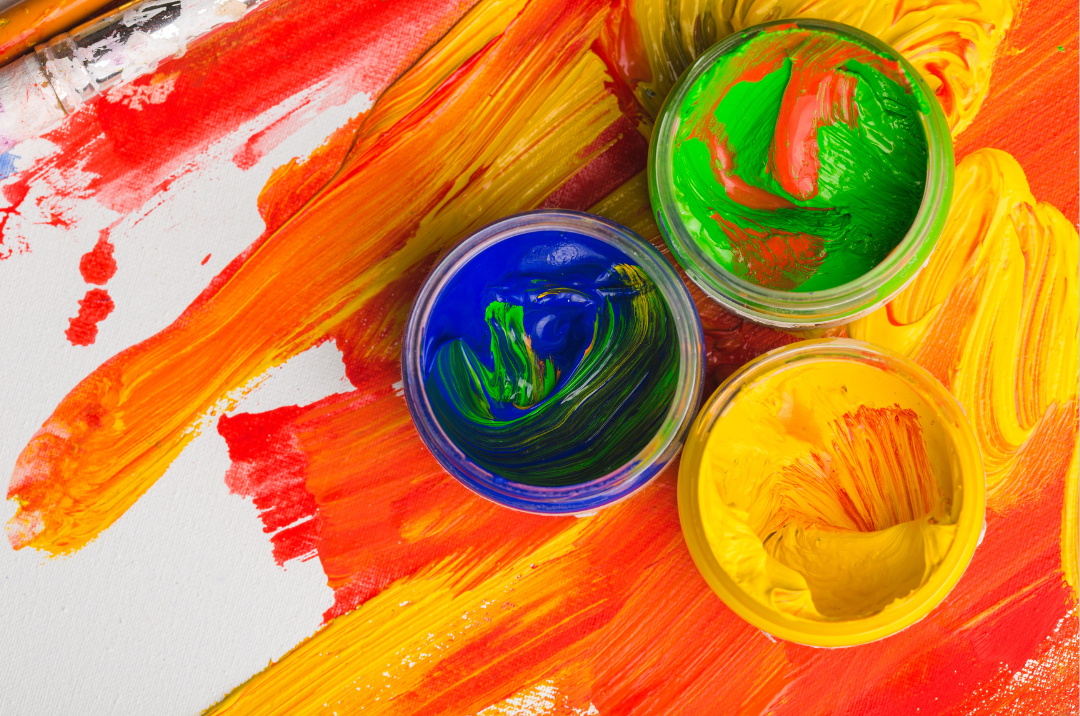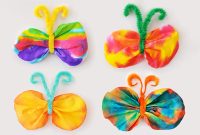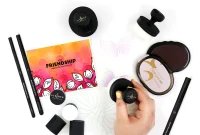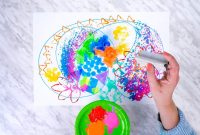Beginners and experienced artists alike know how important it is to be able to mix colors properly in the world of color production. Combining shades is not enough to make a work of art stand out; tone, hue and brightness all work together in complex ways. We cover everything you need to know about color mixing, from the basics of color theory to advanced methods trusted by professional artists.
1. Start
A.What does “mixed color” mean?
Combining different colors to form new shades, tints and shades is called color mixing. This is one of the most important skills in art, allowing your work to achieve the desired effect.
B. The importance of color production
A very important part of creating colors is learning how to mix colors properly. A rich and balanced palette gives artists the freedom to be creative, make people feel things and bring their ideas to life.
2. Basics of color theory
A. Basic color
To mix colors, you need to know the basic colors: red, blue and yellow. You cannot mix these colors by mixing other colors; they are the building blocks of all other colors.
B. Grayscale
Orange, green and purple are examples of secondary colors that can be made by mixing two primary colors. They allow for a wider range of colors and can be used as building blocks for more mixtures.
C. Tertiary color
When you mix a primary color with a nearby secondary color, you get a tertiary color. When working with these shades, the artist’s creative range becomes deeper and more diverse.
three. Color wheel: a simple guide
Learn about the color wheel
A color wheel is an image of how colors relate to each other. It helps artists find complementary, similar, or triadic color schemes to guide their choices when using color.
B. Use in painting
Artists can create more visually appealing and balanced compositions by using the color wheel. It is an important tool for anyone who wants to get good at mixing colors.
Four. Tools for mixing colors
A. Color and paint
For accurate color matching you need to use good pigments and powders. To get the results they want, artists must understand how different materials work.
B. Color scheme
Choosing the right color for a room is an art. Well-combined colors can make you feel certain feelings and emotions, while poorly combined colors can create very interesting visual effects.
C. Mixed media
Artists can experiment with different textures and effects in color production by adding different types of paint, such as oil paint, acrylic paint and watercolor paint.
5. Tips for mixing colors
A. Mix slowly
Gradual blending means the transition from one color to another without rough edges. This method is particularly effective for producing accurate and detailed illustrations.
B. Add color
Adding layers of color to a piece can give it more depth and dimension. By cleverly combining different colors, artists can create beautiful features and variations.
C. Create tones and shadows
When artists know how to create shadows (by adding black) and tones (by adding white), they can more easily determine the intensity and value of a color.
six. More advanced color mixing
A. Color temperature
Artists can create specific moods in their work by exploring warm and cool colors and understanding how they make people feel.
B. Well-coordinated colors
By adding well-coordinated colors together, they stand out even more. Artists can use this method to create focus and draw attention to certain parts of their work.
H. Colors that look alike
When you use a similar color scheme, you use colors that are next to each other on the color wheel. This ensures that the connection looks good and works well together.
7. Common mistakes not to make
A. Overmixing
If you mix too many colors, they will look dull and muddy. To maintain the sharpness and clarity of the image, artists must use limited blending.
B. Ignore how color works
If you don’t pay attention to the properties of each color, strange things can happen. It is important for an artist to understand the properties of each color.
C. Ignore the lighting conditions
Artists should consider how different light will affect their work. Different types of lighting can cause real-life examples
A. Artists demonstrate how well they mix colors
Looking at the work of famous artists who specialize in color mixing can help you improve your own color mixing skills.
B. How it changes different types of art
Color mixing is a skill that can be used in many art forms, from painting and sculpture to computer art and logo design.
X. Helpful advice for new users
A. Start with basic colors
Those just starting out should start by mixing basic colors to understand how it works before moving on to more complex combinations.
B. Try a limited color palette
When artists have limited colors to work with, they can be more creative and focus on learning the subtleties of a few colors.
C. Write down how to mix the colors.
Artists can record their attempts, lessons learned, and good color combinations by keeping a color mixing notebook for later use.
11. Trends in color production
A. Modern methods of mixing colors
Learn about the latest trends in color production and creative ways to use color. This will help you keep up with changes in the art.
B. Important artists and their way of doing things
Discover how important artists are in pushing the boundaries of color mixing and inspiring the next generation of artists.
twelve. Problem mixing colors
A. Overcoming creative barriers
When artists work with color, they can encounter creative blocks. We will discuss ways to solve these problems.
B. How to deal with unexpected results
Not all color mixing experiments will have the desired effect. Part of creativity is being open to the unexpected.
C. Always learn
Over time you will be able to mix colors better. Artists remain at the forefront of their field by emphasizing the importance of continuous learning.
Thirteen. Discover digital color mixing
A. Software and digital tools
Discover how digital artists use software and tools to mix colors in new ways, making digital art more flexible.
What are the pros and cons?
Compare and contrast the pros and cons of digital color mixing with older methods.
fourteen. support and collaborate
A. Join an artist group
As part of an art community you can work, learn and share your experiences with others who love coloring.
B. Projects Completed Together
As artists work on projects together, they can share knowledge about how to mix colors to create new and exciting works of art.
fifteen. In summary
A. Summary of key points
Learning how to properly mix colors is a process of self-discovery and exploration that opens up new ways to express yourself as an artist.
B. Encourage continued exploration
People who want to become artists are told to enjoy the difficulties, rejoice in the victories, and continue to explore color creation with love and dedication.
Frequently Asked Questions
How long does it take to get good at mixing colors in color production?
A: Different people learn to mix colors at different rates. The most important thing is to keep practicing and trying new things.
Can I mix colors freely in digital art?
Answer: Of course! Digital artists often use complex tools to mix colors in very specific ways in their work.
What does the color wheel have to do with color production?
A: The color wheel helps artists understand how colors relate to each other and put together pieces that look good.
Q: Is there a way for beginners to quickly learn color mixing?
A: There’s no easy way to learn it, but starting with the basics can make the process more manageable over time.
How do I get out of trouble when mixing colors?
A: To overcome artistic blocks, try using different color combinations, take a break and ask other artists for ideas.





